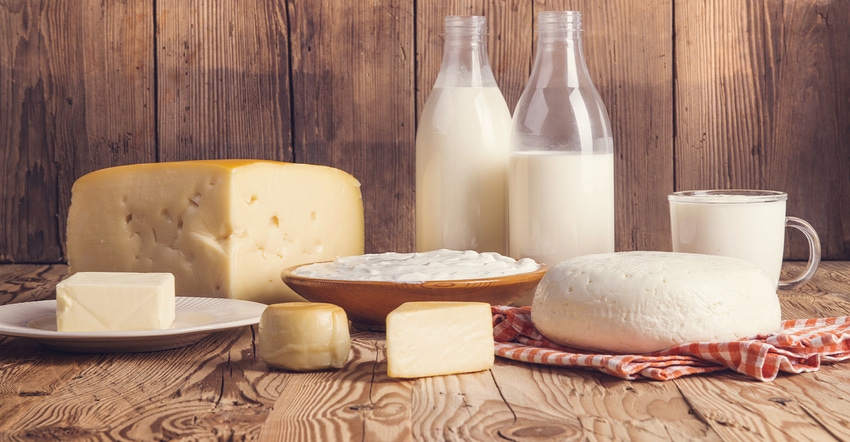
Milk prices are steadily rising, because milk production is lower than it was a year ago and there has been modest growth in dairy product sales, according to Bob Cropp, University of Wisconsin-Madison dairy economist. Dairy exports are lower than a year ago, but improved dairy stocks levels are also contributing to higher milk prices.
The July Class III price will be near $17.40, up about $3.50 from February, when it was only $13.89. The Class IV price, which was $15.48 in January, will be near $16.90 in July. Milk prices will keep improving through the rest of the year, according to USDA.
USDA’s estimated U.S. milk production for June was 0.3% lower than a year ago. Milk cow numbers declined by 10,000 head from May to June, and were 91,000 head, or 1%, lower than a year ago. Milk per cow was 0.6% higher.
In the West, milk production was lower by 4.6% in Arizona and 2.8% in New Mexico, but up by 1.2% in California, 2% in Idaho, 5.6% in Texas and 6% in Colorado. In the Midwest and Northeast, milk production rose 2.2% in Michigan, and just 0.8% in Minnesota, 0.9% in South Dakota and 0.2% in New York; but it was down 6.5% in Pennsylvania, 4.6% in Ohio, and 0.5% in both Iowa and Wisconsin. In the Southeast, production was down 3% in Florida and 8.1% in Virginia, according to USDA.
Fluid (beverage) milk sales continue to decline, with January through May down 1.8% from a year ago. Butter and cheese sales continue to show growth. Domestic disappearance from January through May was 4.3% higher than a year ago for butter and 1.4% higher for cheese.
Weaker exports
The volume of dairy exports continues below a year ago, Cropp says. “Nearly all of the reduced volume came from lost sales to China,” he notes. “Sales to China of skim milk powder, cheese, butterfat, whey products and lactose were down 67% in May.” Nevertheless, according to the U.S. Dairy Export Council, for the first five months of the year, overall volume of exports is on track for the third best year ever, only trailing the pace of 2018 and 2014.
Compared to May a year ago, exports were lower by 9% for nonfat dry milk-skim milk powder, 41% for butterfat, 29% for whey products and 14% for lactose, but up 11% for cheese. Cheese remains the bright spot for exports. While cheese to Mexico, the largest market, was down 7%, exports to Southeast Asia, Japan and South Korea were well above a year ago, according to USDA. On a total solids basis, May exports were equivalent to 14.7% of milk production.
The dairy stocks situation continues to improve. Butter stocks, as usual, increased from May to June but were 2.6% lower than a year ago. American cheese stocks declined from May to June and were 1.9% lower than a year ago. Other cheese stocks also declined from May to June but were still 2.2% higher than a year ago. This resulted in total cheese stocks declining from May to June but ending up just 0.5% lower than a year ago, according to USDA.
Less milk
“Milk production is likely to continue below a year ago for the remainder of the year,” Cropp says. “USDA is forecasting milk production for the year to be just 0.3% above a year ago. That is positive for improved milk prices.”
Butter and cheese sales should continue to show growth, particularly in the fourth quarter during Thanksgiving and the holidays, according to USDA. Cheese exports are forecast to continue to run above year-ago levels.
“The U.S. eliminated its tariffs on aluminum and steel from Mexico, and in turn, Mexico eliminated its tariff on U.S. cheese, which should be positive for exports by fourth quarter,” Cropp explains. “These factors are bullish for milk prices.
“The Class III price should be in the mid- to high $17s for the remainder of the year, with $18 a real possibility in the fourth quarter. However, unless dry whey prices increase from the current 34 cents per pound, cheese needs to be about $1.90 per pound to get to $18. Currently, cheddar barrels are $1.71 per pound, and 40-pound blocks are $1.79 per pound.”
About the Author(s)
You May Also Like






